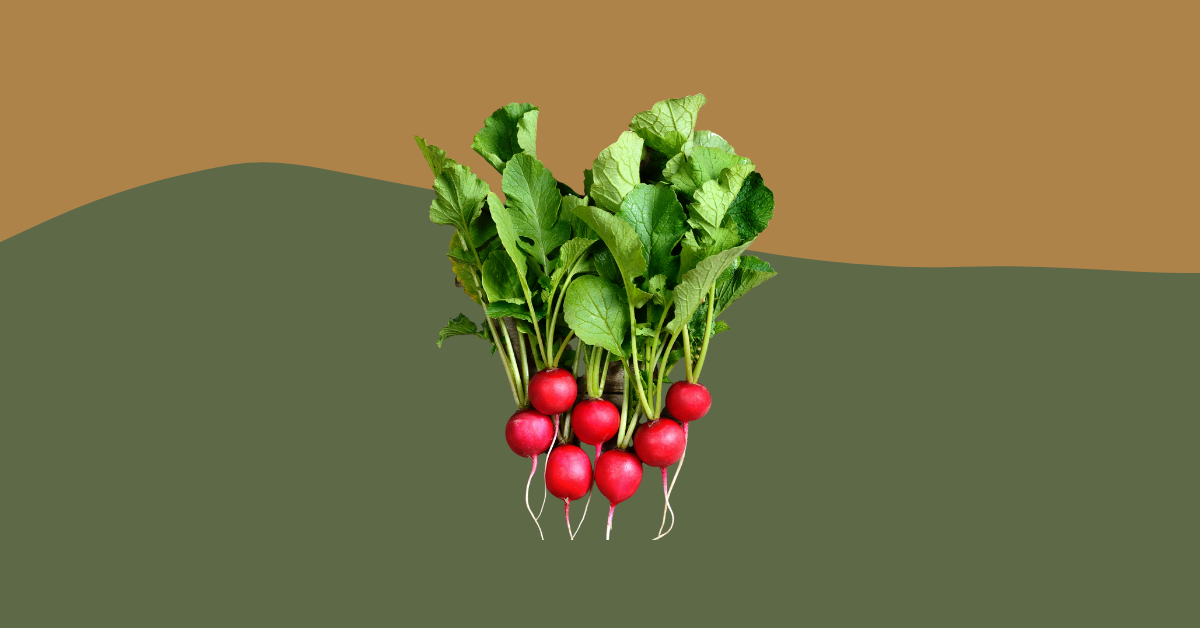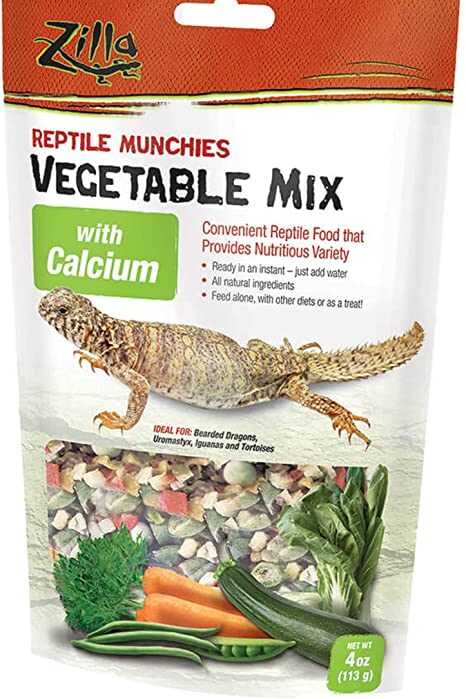Yes, bearded dragons can eat radish greens in moderation. They are a healthy source of nutrients for these reptiles.
Table of contents
As omnivores, they require a varied diet of both insects and vegetables. One such vegetable that many bearded dragon owners wonder about is radish greens. This article will provide the do’s and don’ts of feeding radish greens to your bearded dragon. Learn about bearded dragon care, a step-by-step preparation guide, and find answers to frequently asked questions.
Related Article: Bearded Dragon Care: Expert Tips and Insights
Do’s
- Feed in moderation: Radish greens are safe for bearded dragons but should be fed in moderation. They can be part of a balanced diet when combined with other greens and insects.
- Wash thoroughly: Ensure that the radish greens are clean and free from pesticides or chemicals before feeding them to your bearded dragon.
- Chop finely: Cut the radish greens into small, manageable pieces to make it easier for your bearded dragon to eat.
Don’ts
- Don’t overfeed: Overfeeding radish greens can lead to an imbalanced diet and potential health issues. Make sure to rotate greens and provide a variety of vegetables.
- Don’t rely on radish greens alone: Radish greens should not be the sole source of vegetables in your bearded dragon’s diet. A mix of leafy greens and other vegetables is essential for a balanced diet.
Best Practices for Feeding Radish Greens to Bearded Dragons
Following best practices when feeding your bearded dragon will ensure their safety and overall health. Here are some best practices to keep in mind:
- Understand your bearded dragon’s dietary needs: Bearded dragons are omnivores, requiring a balanced diet of insects, leafy greens, and vegetables. Understanding their nutritional requirements will help you make informed decisions when introducing radish greens to their diet.
- Monitor calcium to phosphorus ratio: A balanced calcium to phosphorus ratio is crucial for bearded dragon health. Radish greens have a higher calcium to phosphorus ratio than some other vegetables, making them a good choice in moderation. Aim for a ratio of 1.5:1 to 2:1 (calcium to phosphorus) for optimal bone health.
- Combine with other leafy greens: Rotate radish greens with other leafy greens such as collard greens, dandelion greens, and mustard greens to ensure a varied diet. This will provide a diverse range of nutrients and prevent overreliance on a single type of vegetable.
- Gradually introduce radish greens: Introduce radish greens to your bearded dragon’s diet slowly to avoid potential digestive issues. Start with a small amount mixed with their regular greens and gradually increase the portion size over a few weeks.
- Avoid high oxalate vegetables: While radish greens have a relatively low oxalate content, it’s essential to avoid feeding your bearded dragon vegetables high in oxalates, as they can interfere with calcium absorption. Limit or avoid vegetables like spinach, beet greens, and Swiss chard.
- Observe your bearded dragon’s behavior and health: Keep a close eye on your bearded dragon’s behavior, appetite, and overall health when introducing new foods like radish greens. If you notice any changes or adverse reactions, consult your veterinarian for guidance.
- Consult with a reptile veterinarian: If you are unsure about your bearded dragon’s dietary needs or how to introduce radish greens safely, consult with a reptile veterinarian for personalized advice.
- Keep a feeding schedule: Establish a consistent feeding schedule for your bearded dragon, which includes a balanced mix of insects, leafy greens, and vegetables. This will help you monitor their food intake and ensure they receive the nutrients they need.
- Provide appropriate supplements: Bearded dragons may require additional supplements, such as calcium and vitamin D3, to maintain proper health. Consult with a reptile veterinarian to determine the appropriate supplementation for your bearded dragon.
- Store radish greens properly: To maintain freshness, store radish greens in a sealed container or plastic bag in the refrigerator. This will help prevent spoilage and ensure the greens remain nutritious for your bearded dragon.
Related Article: Bearded Dragon Feeding Guide: Nutrition Tips
Step-by-Step Guide to Preparing Radish Greens for Your Bearded Dragon
Step 1
Select fresh radish greens: Choose fresh, organic radish greens without any signs of wilting or yellowing.
Step 2
Wash thoroughly: Rinse the radish greens under cool water to remove any dirt, pesticides, or chemicals.
Step 3
Chop finely: Cut the radish greens into small, manageable pieces for your bearded dragon to consume easily.
Step 4
Combine with other greens: Mix radish greens with other leafy greens and vegetables to create a balanced diet.
Step 5
Serve to your bearded dragon: Offer the prepared greens to your bearded dragon in a shallow dish or bowl.
Need Recommendations?
Here’s Our Top Amazon Picks
You may also like 📖
Frequently Asked Questions
Can bearded dragons eat radishes?
Bearded dragons can eat radishes, but they should be offered in moderation due to their higher oxalate content.
How often should I feed my bearded dragon radish greens?
Radish greens can be fed to your bearded dragon once or twice a week as part of a varied diet.
What other vegetables are suitable for bearded dragons?
Bearded dragons can eat a variety of vegetables, including bell peppers, squash, and carrots. Always research new foods before introducing them to your bearded dragon’s diet.
Can I feed my bearded dragon frozen radish greens?
It is best to feed your bearded dragon fresh radish greens. However, if frozen greens are your only option, make sure to thaw them completely and remove any excess water before feeding.
Are there any risks associated with feeding radish greens to bearded dragons?
The main risk is overfeeding, which can lead to an imbalanced diet and potential health issues. Feed radish greens in moderation and combine them with other vegetables to maintain a balanced diet.
Conclusion and final thoughts 💭
Feeding radish greens to your bearded dragon can provide essential nutrients and help maintain a balanced diet. Remember to always wash and chop the greens before feeding and offer them in moderation as part of a varied diet.
Monitoring your bearded dragon’s health and adjusting their diet as needed will help ensure they live a long, healthy life.
Looking for more? Here’s our roadmap:
General Bearded Dragon Pet Owners Guide
Bearded dragons are native to the arid regions of Australia and are known for their unique beard-like appearance. As pets, they have become increasingly popular due to their friendly and inquisitive nature, making them an ideal choice for reptile enthusiasts. Bearded dragons are diurnal, meaning they are active during the day, and their average lifespan ranges from 8 to 12 years, with proper care. When considering adopting a bearded dragon, it’s essential to be prepared for a long-term commitment and be well-informed about their care requirements.
One of the most crucial aspects of bearded dragon care is providing an appropriate enclosure. Adult bearded dragons thrive best in a 20 to 50-gallon tank, but a larger enclosure is always better. It’s important to always keep the tank clean. The tank should have a basking area with a temperature range of 95-110 degrees Fahrenheit, as well as a cooler area with a temperature between 75-85 degrees Fahrenheit. In addition, bearded dragons need access to UVB lighting to help them synthesize vitamin D3 and properly metabolize calcium, which is vital for their bone health.
A balanced diet is essential for a healthy bearded dragon. Their dietary requirements change throughout their life stages; juvenile bearded dragons need a higher protein intake, with insects making up around 80% of their diet and the remaining 20% consisting of vegetables and fruits. As they grow into adults, their diet should consist of approximately 20% insects and 80% vegetables and fruits. It’s important to offer a variety of food items to ensure they receive all the necessary nutrients, and to dust their food with calcium and multivitamin supplements as recommended by a reptile specialist or veterinarian.
Regular interaction and observation of your bearded dragon are vital for maintaining their well-being. Handling your pet gently and frequently can help build trust and strengthen your bond. Monitor your bearded dragon’s behavior, appetite, and overall health to detect any potential issues early on. If you notice any signs of illness, such as lethargy, loss of appetite, or irregular bowel movements, consult a reptile specialist or veterinarian for guidance. Proper care, feeding, and attention will ensure your bearded dragon remains a happy and healthy companion for years to come.







Leave a Reply